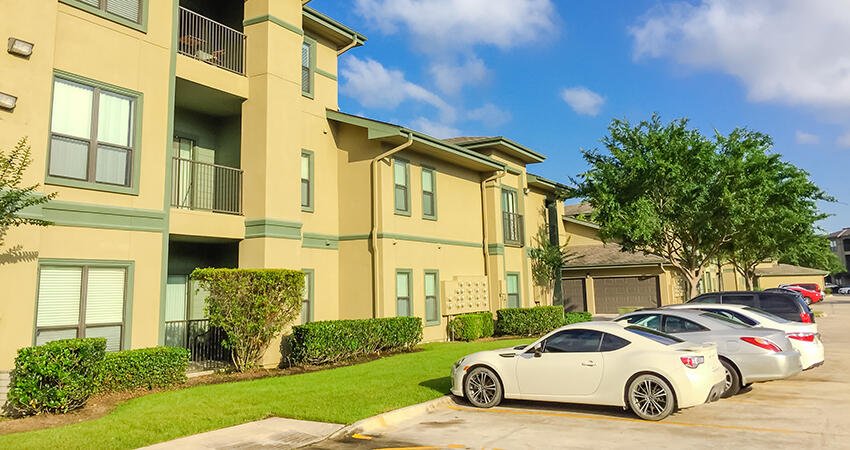
(Trong Nguyen/Shutterstock)
Legal Challenges to Crime-Free Housing Ordinances Bring Effectiveness into Question
In 1992, Arizona police officer Tim Zehring created the first crime-free multihousing program, which sought to bring landlords and law enforcement together to reduce criminal activity in rental properties. The partnership gave landlords security assessment tools, police-taught crime prevention training, and, most notably, a lease addendum that made any illegal activity on or near a rental property grounds for eviction. The program led to the creation of the International Crime Free Association (ICFA), which spread this program to police departments across the country. Within five years, some cities had begun to require property managers to complete the ICFA trainings and use the lease addendum to obtain a rental license. This became the basis for the crime-free housing ordinances that now exist in more than 2,000 cities in the United States and Canada.
Proponents of the ordinances claim they have a broad set of impacts, including a reduction in crime and drug use, improved landlord-tenant relations, lowered maintenance costs, and elevated property values.
However, several recent investigations and lawsuits have scrutinized the legality of these crime-free housing ordinances and highlighted their potential discriminatory impact. New evidence is also emerging that shows the effectiveness of these laws has been potentially oversold and their downsides understated, begging the questions: Are these programs achieving their goals? And do their costs outweigh their benefits?
What is crime-free housing?
Crime-free housing ordinances, sometimes also known as crime-free housing policies (CFHPs) or nuisance ordinances, require or incentivize landlords to evict renters with criminal justice involvement, but the definition of criminal justice involvement that constitutes eviction varies widely between ordinances. Some cities focus only on criminal convictions, while others expand the definition to include alleged criminal activities, where an arrest or police stop can lead to eviction regardless of whether the accused party is found guilty. In some cases, tenants can be held liable for the actions of their guests or family members while on rental property.
Many of these ordinances don’t distinguish between help-seeking behavior and criminal activity. For example, certain cities can require a landlord to evict a tenant for calling 911 too many times, as was the case for Rosetta Watson in Maplewood, Missouri, who was forced out of her rental when she called the police because of repeated instances of domestic violence in which she was the victim.
The broad range of ordinances makes it difficult to compare and measure the impact of each of these policies.
Why are crime-free housing ordinances being challenged?
In recent years, different lawsuits and investigations have focused on the legality of these ordinances and the ways they’re enforced.
On December 2, 2019, the US Department of Justice (DOJ) filed a lawsuit against the city of Hesperia, California, and the San Bernardino Sheriff’s Department, alleging that the local crime-free housing policy violated the Fair Housing Act because it disproportionately affected African American and Latinx renters. The ordinance required property owners to evict tenants if they were notified by the sheriff’s department that the tenants had engaged in any alleged criminal activity on or near the property. An investigation found that Black and Latinx renters were significantly more likely to be evicted under this ordinance (4 times more likely and 29 percent more likely, respectively) than white renters. These evictions were also overwhelmingly more likely to occur in areas with higher percentages of Black and Latinx renters. Based on this disparate impact, the lawsuit alleges violation of Fair Housing law and substantial selective enforcement of laws by the local police departments.
Even more recently, a DOJ investigation revealed that the crime-free multihousing program in Anoka, Minnesota, violated the Americans with Disabilities Act by discouraging tenants with mental health issues from seeking police assistance during times of crisis for fear that it could jeopardize their housing situation. In the case of Rosetta Watson, the American Civil Liberties Union (ACLU) asserted the enforcement of the nuisance ordinance conflicted with the federal Violence Against Women Act and the right to free speech enshrined in the US Constitution. The case was settled in 2018, which included a major overhaul of the law and a requirement that the locality no longer enforce the ordinance against victims of crime or penalize residents based on calls for police or emergency services. The city was also required to train its officials on how to support victims of crime and provide records annually to the ACLU.
Are crime-free housing ordinances effective?
The primary goals of crime-free housing ordinances touted by ICFA are to reduce criminal activity and benefit landlords through increased stability, but recent evidence suggests they may not be as effective as they claim. A 2023 study from the RAND Corporation evaluated the impacts of 104 crime-free housing policies in California and found no statistically significant relationship between CFHPs and crime rates. The study found that between 2009 and 2019, municipalities with CFHPs experienced the same increase in crime as municipalities without CFHPs.
The same study found that the use of CFHPs leads to a significant increase in evictions, which decreases renter stability and places an extra financial burden on landlords. Studies show that evictions cost landlords thousands of dollars through a combination of filing and attorney’s fees and rent lost during the process. Landlords may also open themselves up to legal liability if they fail to comply with their city’s eviction requirements.
What can cities and localities do to mitigate the negative impacts of crime-free housing?
Given the negative impacts to tenants and potential violation of federal protections, municipalities with this type of ordinance may need to rethink these policies moving forward.
Some jurisdictions have chosen to repeal the ordinances entirely, as Hesperia did in 2022. Recently, Governor Gavin Newsom signed legislation banning local governments from requiring landlords to evict tenants on the basis of calls to law enforcement or alleged criminal activity. The bill, A.B. 1418, passed both houses of the legislature with no dissenting votes.
Some cities that want to keep their ordinances but minimize the unintended harms to renters have recently changed the scope of these ordinances. For example, coming out of their DOJ and ACLU lawsuits, Maplewood agreed to adopt protections for victims of crimes and tenants seeking emergency services, and Faribault, Minnesota, significantly shortened the list (PDF) of disorderly conduct that constitutes eviction and now specifies that the conduct must take place on the rental property. These modifications to the law may reduce the number of people negatively affected by the law and could reduce the ability of landlords and police to selectively enforce the ordinances.
Cities and localities should also more effectively gauge the effects of their crime-free housing laws. As part of a study on nuisance ordinances (PDF) in New York cities, the ACLU and Social Science Research Council recommended that city and state officials analyze the impact of existing ordinances on renter households—in particular, crime victims and tenants with disabilities—to address harms or inequities that may have been overlooked. Above all, the study urged localities to seriously consider the documented costs before deciding to implement a crime-free housing ordinance.


